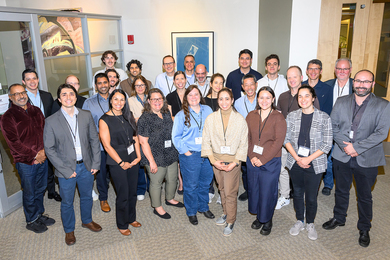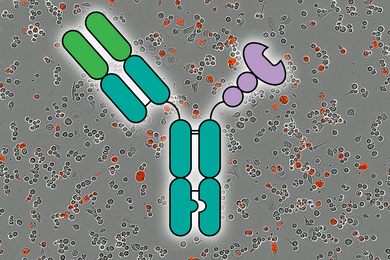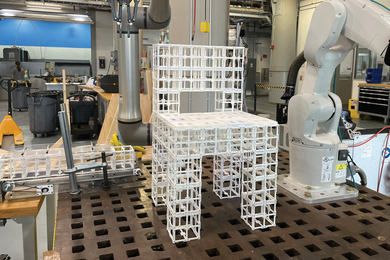French-language students at MIT are benefiting from a breakthrough method of instruction developed by Senior Lecturer Gilberte Furstenberg and her colleagues. Working in parallel with English classes at institutions of higher learning in France, the Cambridge students are using Internet forums to explore issues of cultural difference that lie deep beneath the surface of language.
As Furstenberg explained in a talk entitled "The Pedagogy of Intercultural Understanding," given on Oct. 20 under the aegis of the Center for Bilingual/Bicultural Studies, "Learning entails not just facts and knowledge but building understanding of another culture, a journey of exploration and discovery."
Furstenberg's innovative National Endowment for the Humanities-funded program, Cultura--"where the Pont Neuf meets the Brooklyn Bridge"--was specifically designed to facilitate cultural exchange rather than merely build vocabulary or reinforce grammar.
It addresses some of the new priorities set out in MIT's Task Force on the Undergraduate Educational Commons, which included among its recommendations the strengthening of intercultural studies and further encouragement of study abroad by undergraduates. Says Furstenberg, "It's an educational priority on campuses across the country," as greater globalization in education, science, law and business demand greater willingness to see things from a different cultural point of view. "What we do in Cultura tackles these issues head-on."
Students on both sides of the Atlantic compare a variety of similar French and American materials that are located on an MIT web site and then, through a series of forums, share their comments and perspectives, with the goal of getting an insider's view of each other's culture.
At the beginning of their journey, students are asked to write down, in their native language, word-associations ("suburb/banlieue," "France," "freedom," "success"), sentence-completions ("A rude person is…") and answers to questions that are designed to illuminate contrasts in cultural values and attitudes ("What would you think if you saw a mother at the supermarket hitting her child?" or "What do you do if you see a student cheating at an exam?").
The classes also read and compare print media (The New York Times and Le Monde); watch videos in tandem, taking advantage of the many French films that have been remade in English, such as "Three Men and a Baby"; and compare historical documents and literary texts.
The posted responses become fodder for wide-ranging discussions as students probe differences in attitude, humor and interpersonal dynamics: An American student may comment that the French seem to touch each other more than Americans do, while the Americans are more generous with the phrase "I love you"; a French student will respond or ask for clarification, and these exchanges in turn are used as sources of cultural and language information.
Both sets of students notice right away, for example, that Americans tend to use the first person (I, me, my, mine) and personal anecdotes, while the French students use the impersonal and passive voice ("It is clear that…," "One may conclude…"). Postings generally number between 600 and 800 per semester: a large sample to mull over and analyze.
Since its introduction in 1997, Cultura has been adopted at numerous colleges and universities, including Brown, Barnard, the University of Chicago, the University of California at Berkeley and Smith, and put to work in many languages besides French. Educational technical consultants Rich Garcia and Carter Snowden, from Academic Computing at MIT, have been instrumental in facilitating the use of Cultura by instructors and allowing it to be easily exported to other universities.
Furstenberg's sophisticated teaching methods grew out of her drive to put the technologies being developed at MIT to work in teaching the humanities.
Some two decades ago, she started going around to the different departments at the Institute to find out what other people were doing in video. At what would later become the Media Lab, she first heard of interactive video and saw "The Aspen Movie," an interactive videodisc-based tour of the Colorado city produced at MIT with funds from the Advanced Research Projects Agency.
Recognizing the potential of interactive video to revolutionize language learning, she developed an award-winning "virtual immersion" software program, co-designed with Kurt Fendt, called "A la Rencontre de Philippe," which pulls students into helping a young Parisian man with his housing, work, and love problems and which was recently published by the Paris-based CLE International.
She also designed the concept and pedagogy for "Dans un quartier du Paris," an interactive tour of a Paris neighborhood, published by Yale University Press, before teaming up with former colleagues Shoggy Waryn and Sabine Levet to produce Cultura.
"I believe something like this could only happen at MIT," she says.
A version of this article appeared in MIT Tech Talk on November 1, 2006 (download PDF).






